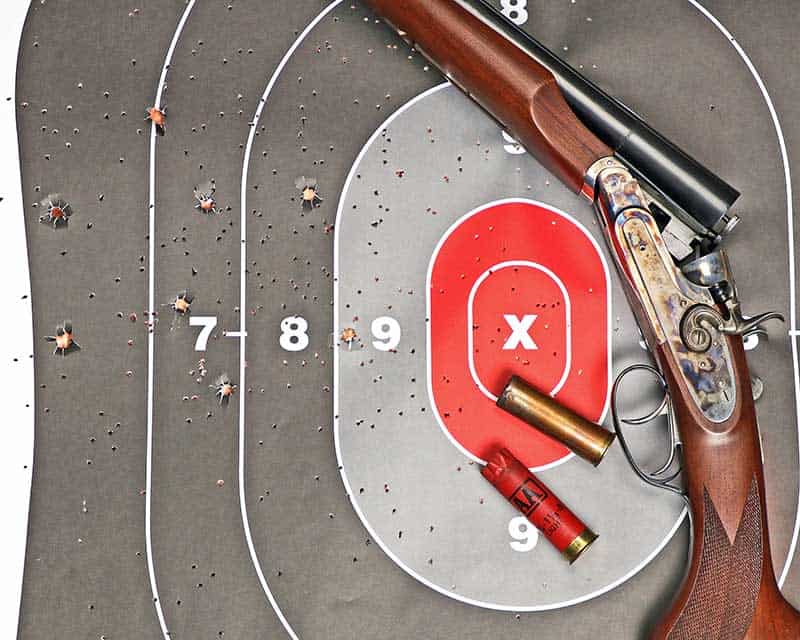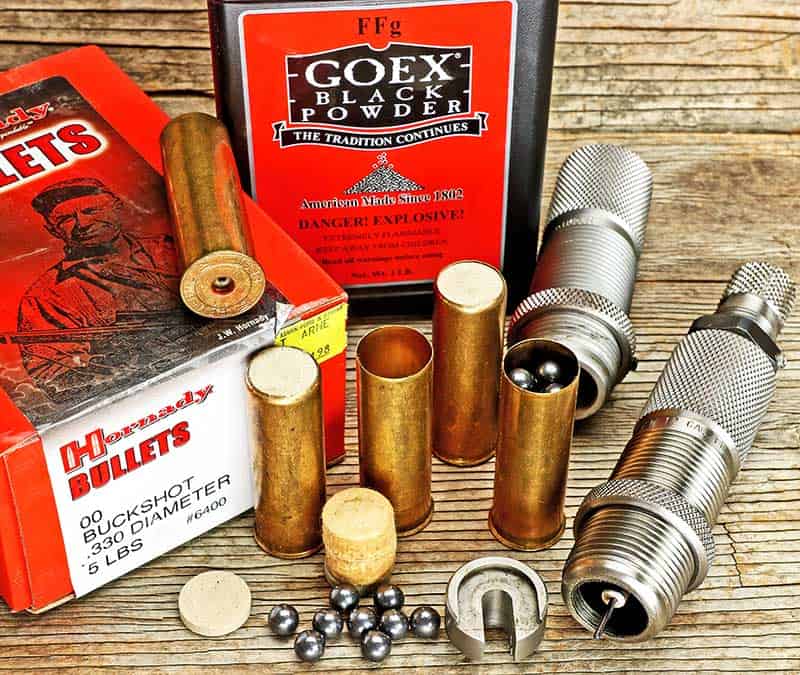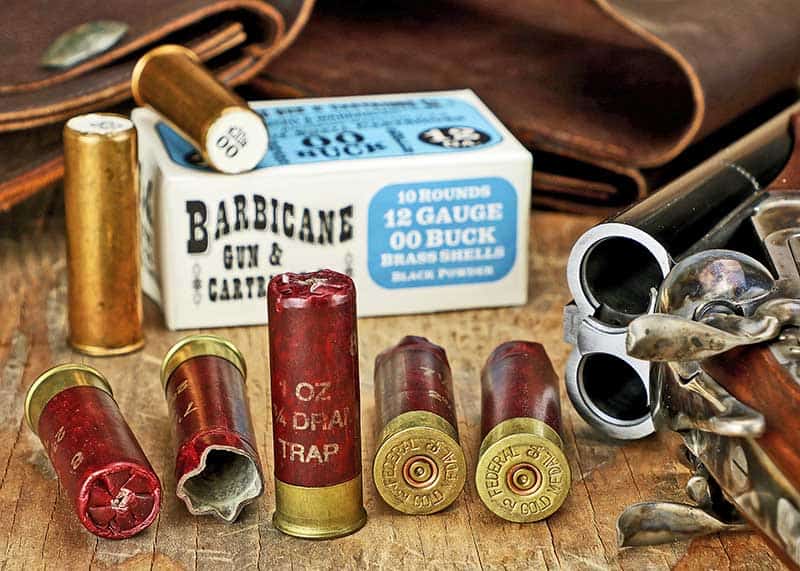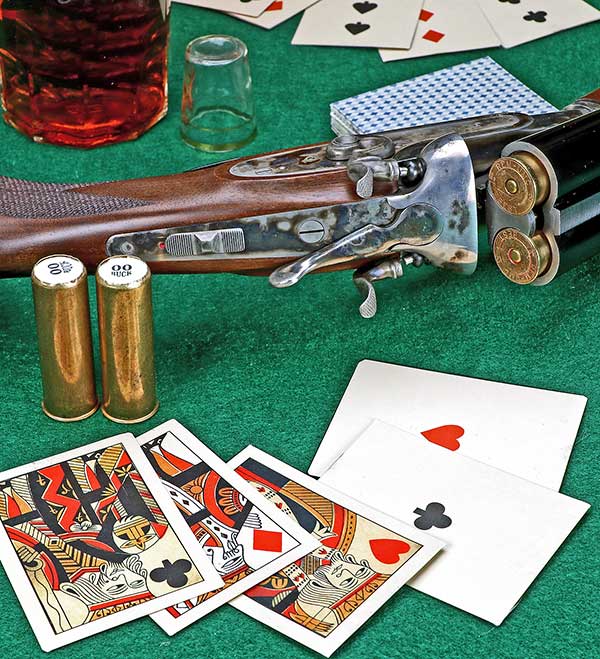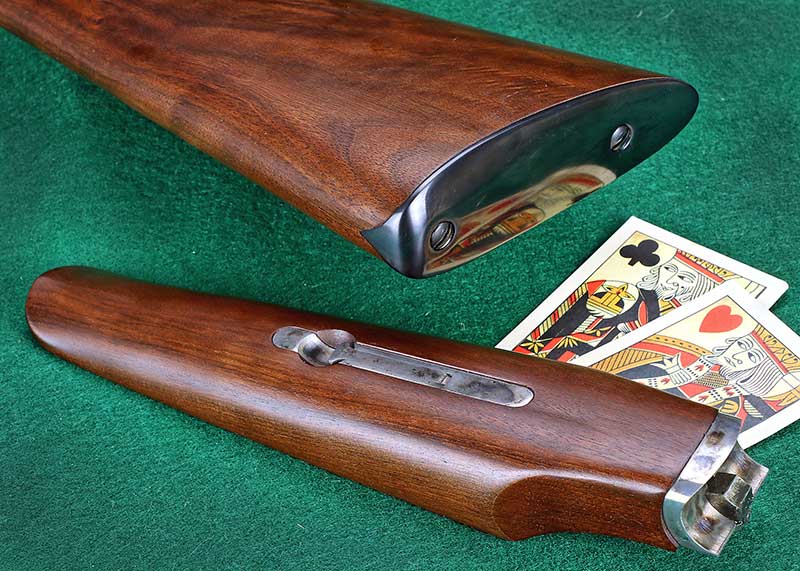Double Ought!
Reliving The Old West With Taylor's & Co.'s
"Wyatt Earp" Double-Barreled Shotgun
Tombstone Nugget, Oct. 27, 1881, “The 26th of October will always be marked as one of the crimson days in the annals of Tombstone, a day when blood flowed as water, and human life was held as a shuttlecock, a day always to be remembered as witnessing the bloodiest and deadliest street fight that has ever occurred in this place, or probably in the Territory….”
Thus the long-simmering Earp/Clanton feud burst into violence, violence that would continue with the murder of Morgan Earp and the serious wounding of Virgil Earp. Wyatt Earp would exact cold, hard revenge on the men responsible. In a blurring of roles, Wyatt crossed over from stalwart lawman to a furtive vigilante hunted by a duly appointed posse itself under color of law, since one of its members was another Wyatt would seek vengeance against. The story has entranced generations to this day.
Wyatt, out for revenge, was stalked by his brother’s murderer in Tucson and allowed a double-barreled shotgun to loudly indicate his displeasure. Tomb-stone Weekly Epitaph, Tucson, Ariz. (March 21, 1882) — “This morning at daylight the track-man at the Southern Pacific railroad depot found the body of Frank Stilwell about 100 yards north of Porter’s hotel, at the side of the track, riddled with bullets.
“Six shots went into his body — four rifle balls and two loads of buckshot. Both legs were shot through and a charge of 00 buckshot to his left thigh, and a charge through his breast, which must have been delivered close, as the coat was powder burnt, and six buck-shot holes within a radius of 3″. Stilwell had a pistol on his person which was not discharged. He evidently was taken unawares, as he was desperate in a fight and a quick shot.”
Pedersoli’s “Wyatt Earp”
Taylor’s & Co. imports the Pedersoli “Wyatt Earp” double-barrel sawed-off shotgun emblazoned with Wyatt’s name (or not, depending on your preference). Taylor’s “Wyatt Earp” model is an artful recreation by Pedersoli of the hammer gun found across the West where intimidation of an opponent was the first resort, and the delivery of appalling violence the last.
The “Wyatt Earp” gun showcases Pedersoli’s exemplary build quality in fit and finish with richly blued barrels and color case-hardened frame, ham-mers and locks. Rebounding hammers, simple one-piece extractor and double triggers round out the action.
The styling is mostly traditional as befits a hammer gun, and strays with the addition of a semi-beaver-tail forend. While such a departure may scandalize the purist, the forend quickly becomes appreciated during the firing of just a few fast loads with black powder (and not many more with smokeless). Hot barrels and traditional splinter forends quickly become unpleasant to the off hand. The semi-beavertail is wider at the back and tapers toward the front for better control of the gun, and allows you to pull the whole gun back into your shoulder while shooting.
The smooth, uncheckered forend is held by a traditional Deely-style latch. The round-knob pistol-grip stock is simply and tastefully checkered. The wood itself has more figure than most guns in this class, and given a matte oil finish. The buttstock ends in a smooth, blued-steel buttplate.
Held in the shooting hand by the pistol grip, the 20 1/8″ barrels won’t touch the ground when pointing straight down for folks of average height and the overall length is 37 1/4″. At a hair over 7 lbs., the gun is just heavy enough to dampen 12-gauge recoil with average loads even with the smooth, steel buttplate. The top of the buttplate has the attractive peak common on 19th century arms and the length-of-pull is 14 5/8″ measured from the front trigger.
“Sawed off” guns (as the name implies) have no chokes. My trusty brass choke gauge says the left barrel is true cylinder-bore (no choke), and drops through the right barrel. In another departure, the barrels are chrome plated, easing cleanup chores, especially with black powder loads, and the chambers are generously sized for 3″ shells, something I doubt most will engage in firing beyond the odd joke on an unsuspecting friend or in-law (“Here, try these!”).
Range Time
As for shooting, my tests were confined to light target loads, as befits the gun’s aim at the Cowboy Action crowd, shooting Winchester AA Light Target. But the gun is also named the “Wyatt Earp,” so I loaded up some 9-pellet 00 Buckshot loads with Hornady shot in brass hulls over black powder. Secret: C/H 4-D dies for 12-gauge brass hulls can be ordered with a roll crimp die. This eliminates the usual method of gluing the overshot wad to keep it in place. The slightly rounded edge of the roll crimp also allows pumps and levers to feed better, and give you a slight edge dropping them in the chamber of the double during fast reloads. Make sure you’re sitting down before viewing the price of the dies, though.
The load of 82 grains of FFg Goex is ignited by a Winchester Large Rifle Magnum primer to launch the 9-pellet 00 Buckshot load weighing just shy of 500 grains or, in other words, your basic 3-dram, 1-oz. load — long heralded as a target load. It delivers healthy enough performance for paper targets without killing on both ends, but recoil is more noticeable than with smokeless equiv-alent loads. The 9 pellets stack nicely in the case in three tiers of three. The capacious brass cases needed a tall wad stack. Brass cases have plenty of room for much heavier loads.
If the loads sound light, the trig-gers aren’t. Both broke at 11 lbs. with a little sponginess. I don’t find heavy triggers a particular handicap unless shooting clays. For guns like this where aim is generally deliberate, the pull proved little bother.
While hammer guns are normally simple things, our litigious age breeds caution among manufacturers. Exhibit 1 is the presence of a tang safety in addition to the rebounding hammers. While purists may sniff in derision again, the tang safety has some utility beyond acting as a crucifix to repel lawyers. Were you to choose this gun for some close work on bunnies or quail, for example, you would be able to keep the hammers cocked and the gun on safe.
Hands-On
After taking the gun out of its pretty blue velvet bags (much nicer than oily plastic), I gave it a light external clean with Prolix on a patch, and a quick barrel clean. I lubed the hinge pin and locking surfaces with Pro-Shot Pro Gold grease. It effortlessly stays in place throughout a whole day of shooting, and provides exemplary lubricity to hardworking parts. Take proper care of the hinge pin and you’ll have a long-lived shotgun.
I started off shooting the black powder loads and buckshot at 15 yards. The right barrel with its open choke delivered the 9 pellets about 4″ over point of aim, but centered, while the left barrel shot slightly tighter at the same elevation but 8″ left. Eight of the 9 pellets would’ve caused a serious wound. Switching to Winchester AA Target, patterns were the same (albeit with a bunch of tiny holes instead of nine big ’uns). Even with chambers cruddy from the black powder loads, I could still break the gun open and toss the AA empties free over my shoulder for a fast reload. The AA load put plenty of pellets at the point of aim at 15 yards, so scoring on a Cowboy Action target would be a piece of cake with both barrels.
The “Wyatt Earp” gun by Taylor’s & Co. is an upscale version of the style of shotgun used by Wyatt after the events at the O.K. Corral with telling effect. Expensive at a retail of $1,535 compared to guns made in China or Pakistan, but Italians do know a thing or two about making shotguns. This one is a beautifully made shooting replica of the type well known across the West.



